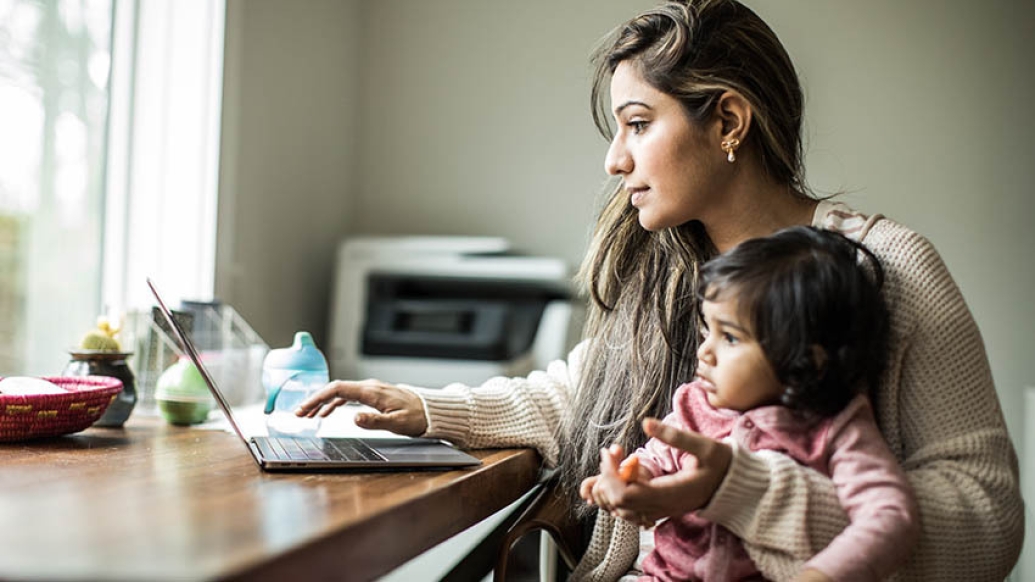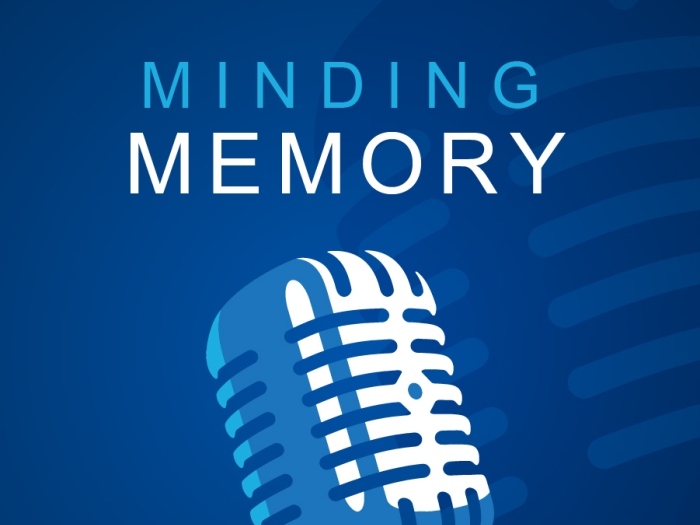Use these psychologist-approved strategies to fix and avoid the remote work burnout.
3:37 PM
Author |

Editor's note: Information on the COVID-19 crisis is constantly changing. For the latest numbers and updates, keep checking the CDC's website. For the most up-to-date information from Michigan Medicine, visit the hospital's Coronavirus (COVID-19) webpage.
In the early stages of the pandemic, the realities of indefinite remote work were not yet clear to many workers.
At first, the set up may have sounded ideal: no commute, sweat pants all day and a break from heading into the office. But as the pandemic lingers, with no definitive end in sight, fatigue and burnout have surfaced as an important issues affecting many remote employees.
"It's harder now to compartmentalize our lives — work versus personal. When you work from home, your attention's split — your dog's barking, your partner might be working next to you, your children are running around — your concentration demands more emotional energy," explains Kelcey Stratton, Ph.D., a clinical psychologist at Michigan Medicine whose training focuses on stress, trauma and resilience. "By the end of the day, we're drained."
Instead of in-person interactions or conversations, at-home workers constantly rely on their computers and phones to stay connected. And it's not only at work: the COVID-19 crisis has forced many relationships to rely solely on using technology to stay in touch, and it's taken its toll.
"We're experiencing some technology fatigue, too, because we're using it in every aspect of our lives now," Stratton says.
As the world continues to function in this new pandemic era, Stratton suggests implementing these six tactics to help alleviate work-from-home stress and technology exhaustion.
1. Switch to phone calls instead of video conferences.
Getting a break from your normally scheduled Zoom discussions might just be the change of pace you need, explains Stratton.
"It's a nice refresher to just focus on someone's voice and interact in that way instead. It's a different task for our brains," Stratton says. "During video calls we're constantly splitting our attention. We're not focusing on one person speaking, we're looking at all these different screens. We're also monitoring how we look and what's in our background, which is different than before."
To avoid the feeling of "being on," try making certain meetings a phone or conference call instead.
SEE ALSO: Keeping Our Patients Safe During COVID-19
"Some meetings are better with video, like large department ones, but if it's only to check in with one person or a small group, a phone call might actually be quicker and more efficient."
But what if your calendar is packed with video meetings? How do you talk to your colleagues or boss about making the transition? Propose it as an experiment, Stratton advises.
Approach your colleagues or supervisor with concern about wanting to protect everyone's energy levels, suggesting what meetings could happen by phone, depending on the group size and discussion topic.
2. Reduce multi-tasking.
Even if you think you've mastered the skill of simultaneously writing emails while partaking in a conference call, doing both actually requires more energy, says Stratton.
"You're never actually doing two things at the same time; we have to switch back and forth," says Stratton, stressing that multitasking can increase fatigue due to the constant shifting between competing demands on your attention and concentration.
MORE FROM MICHIGAN: Sign up for our weekly newsletter
Instead, be more mindful and present on one task, Stratton says. Close out all extraneous applications and browser tabs, put your phone out of reach and turn off any other distractions to help you concentrate on only one activity.
3. Schedule fewer meetings.
Think about your meetings that were already pre-scheduled before COVID hit. Are they all still necessary? Does everyone invited need to join? Can they be shortened?
"Not that we want to lose any of these meetings, but shifting expectations and demands and approaching it in a creative way, while giving space to rest and recover, can be key."
Try substituting certain meetings with a detailed email instead, or combine meetings that may be repetitive.
4. Take micro-breaks.
Pause between meetings, Stratton recommends.
"One thing I've noticed is that all meetings begin and end on the hour or on the half hour. Sometimes after meetings, when in person, there'd be more a brief break to reset, even if that that break meant walking down the hall to another office," Stratton says.
SEE ALSO: Seeking Medical Care During COVID-19
When a call ends, shake things up by walking away from your desk, shaking out your body, taking deep breaths, stretching, resting your eyes and/or stepping outside for a few moments.
"These seem small, but they're useful in resetting our mental energy."
And reexamine the length of your meetings. Could some be switched to 45 or 50 minutes instead of an hour? Those extra five or 10 minutes could allow everyone a quick break without feeling rushed to make their next conference call, says Stratton.
5. Stick to your pre-COVID work routine (even the commuting time).
This is a big one, Stratton explains, especially for those working from home where everything may be in one space. If there's a routine in place, you can transition mentally from being in your home into work mode.
"If you used to commute for 20 minutes, do what you used to do: listen to your podcast or music or have coffee during that time. And at the end of the day, do the same thing you usually would in the car to unwind."
Stratton also suggests, when possible, to put away your computer or other work materials when you're finished for the day to help set boundaries between work and personal time. This can help minimize the temptation of checking your email or doing other job-related tasks after hours.
6. Figure out your body's energy rhythm, and plan accordingly.
One positive about being remote is having a somewhat more flexible schedule than before, which can allow you to better match work projects to your natural energy and attention levels. Discovering and maximizing on when your body innately picks up steam could work well for your to-do list.
"If you're a morning person, try to schedule important work and meetings during the first half of the day. Others may peak with energy in the afternoon. Depending on the type of job you have, try to maximize on these levels as you can."
This article was adapted from a story written by Jennifer Williams.

Explore a variety of health care news & stories by visiting the Health Lab home page for more articles.

Department of Communication at Michigan Medicine
Want top health & research news weekly? Sign up for Health Lab’s newsletters today!





